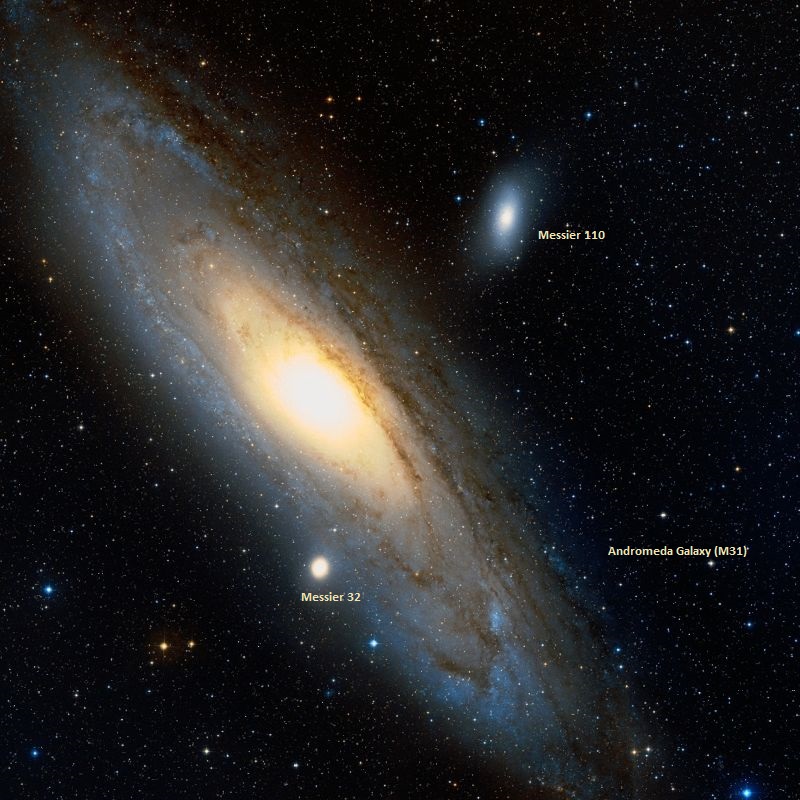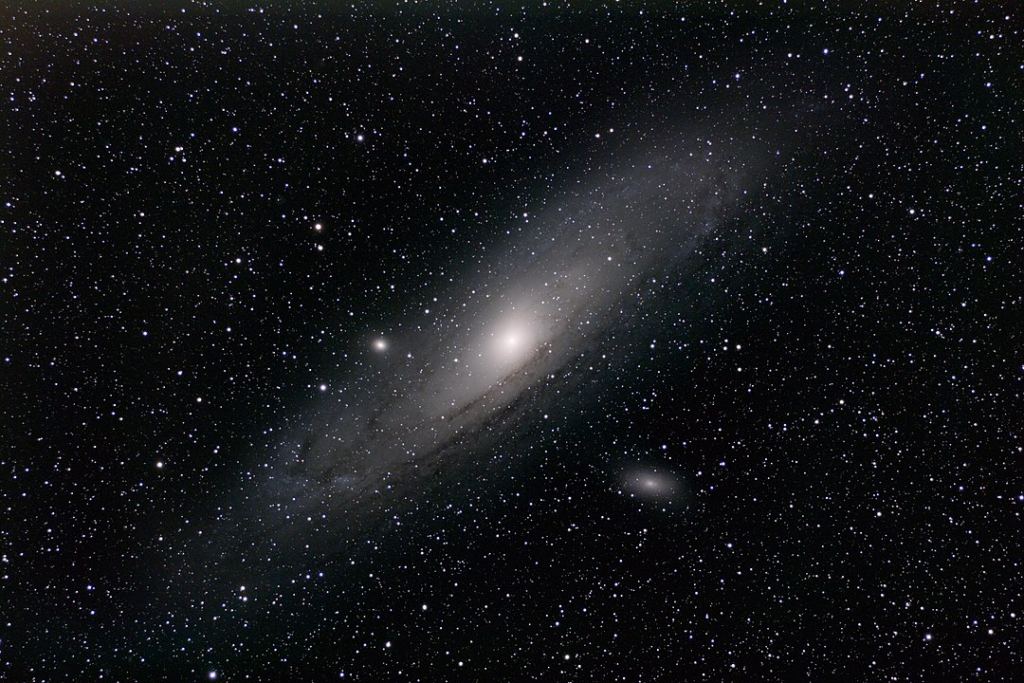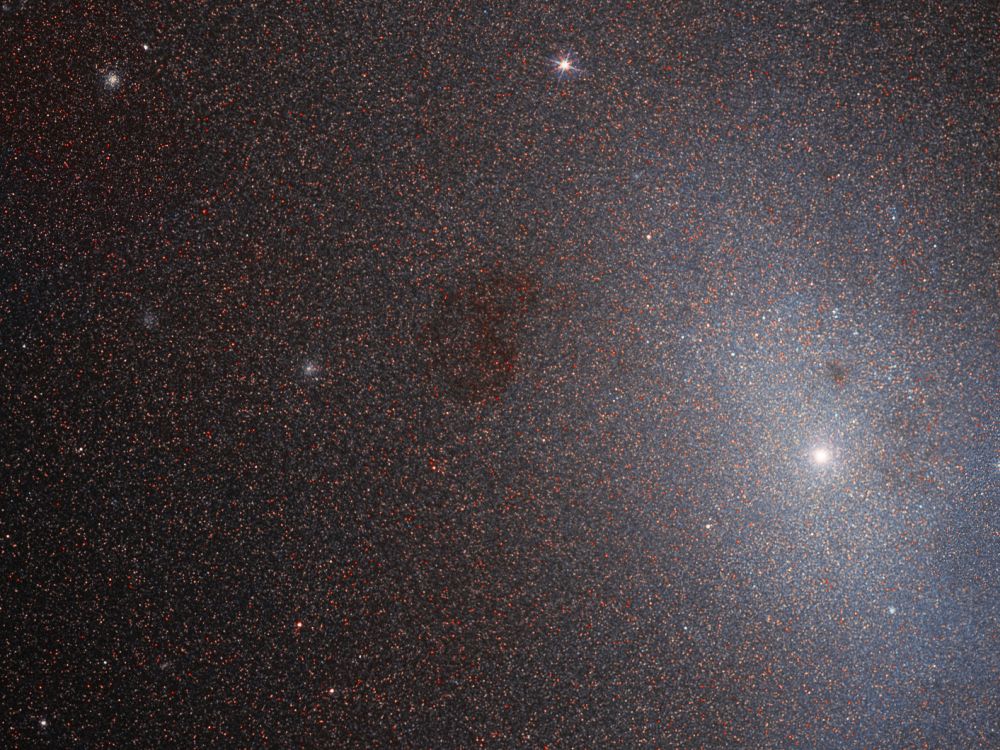Messier 110 (NGC 205) is a satellite of the Andromeda Galaxy. It’s a dwarf elliptical galaxy, a common type of galaxy often found in galaxy clusters and groups, and it contains about 10 billion stars. Like all dwarf ellipticals, it doesn’t have the characteristic shape of galaxies like Andromeda or the Milky Way, with their vast, spiral arms. It has a smooth, featureless shape.
Dwarf ellipticals lack the blazing bright areas of active star formation that other galaxies display. In fact, astronomers think that they’re too old to have any young stars at all. But M110 appears to be different.
This image of M 110 from the Hubble Space Telescope shows that the dwarf elliptical has some hot blue stars in its center. Those stars might shed some light on how dwarf ellipticals form, a question that astronomers have been thinking about for some time.
A star’s color, temperature, mass, and age are all related. Blue stars are hotter than our yellow Sun, because they’re more massive and burn fuel more quickly than a smaller star, like a car with a larger engine. To be blue, they have to have at least three times more mass than our Sun.
But because they burn their fuel more quickly, they also run out of it sooner. So the blue stars in the Hubble image of M 110 have to be younger than the yellow and red stars that make up the bulk of the galaxy’s population.

The Sun is less massive, burns its fuel more slowly, and never reaches the same temperature as a blue star. The Sun will never be blue, (though it will eventually turn red) and will live longer than a blue star.
Dwarf ellipticals don’t have the same stellar nurseries as other galaxy types, which are luminous regions dominated by the formation of hot blue stars. Because of that, they’re considered dead. All of the stars are older, and either yellow or red. As those stars age, no new stars form to take their place.
Because dwarf ellipticals usually contain no new stars, astronomers think they’re nearing the end of their evolutionary life. That may be because black holes at their centers are gobbling up the gas necessary to form new stars. Or it could be because dwarf ellipticals are the result of collisions between other galaxies. Those collisions could strip away the gas that forms stars. But the discovery of young blue stars in M 110 means there may be more to dwarf ellipticals than we know. In fact, astronomers aren’t certain that dwarf galaxies even have black holes.

The Hubble image was taken in visible and near-infrared light with the Wide Field and Planetary Camera 2. M 110’s center is near the lower right of the image, where the young blue stars are. Bright points are globular clusters contained in the galaxy, as well as individual stars. This Hubble image was part of an effort to understand globular clusters.
The image also shows clouds of gas and dust, which appear as blotches. A large cloud is visible in the middle of the image, and a small one is just above the galactic core.
More:
- Press Release: Hubble Takes Closer Look at Not-So-‘Dead’ Neighbor
- NASA: Messier 110
- Wikipedia: Dwarf Elliptical Galaxy
- Research Paper: A 10,000-solar-mass black hole in the nucleus of a bulgeless dwarf galaxy
- Research Paper: How nucleation and luminosity shape faint dwarf galaxies

